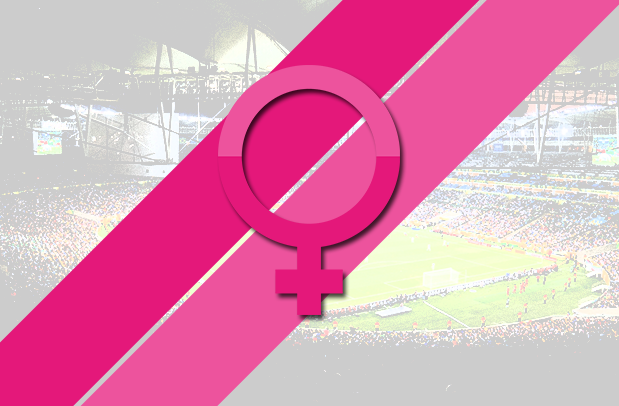John Smith provides us with an article that deals with the increasing popularity of women’s football.

When you come to think about it, the society of today has significantly improved when it comes to gender equality, the times where “football is for boys”, and, “ballet is for girls” is no longer apparent in our day-to-day lives. Consequently, the overall impact of women’s football on our lives today is for some reason still frowned upon, with the media and general public promoting inequality and sexism, regardless of the fact that this is a sport for everyone to love. But, when you turn to the situation as a whole, you begin to realise that women’s football is on the rise – and will continue to be so. Times are changing and women are branching out into multiple areas, they are going from trying out Hobbies for women, to turning them into a potential career that they can build on and thrive in, just like they have with football.
2012 proved to be an important stepping stone for the future of women’s football, the Football Association launched a plan to help improve the game over the next five years and make it the second most played sport in the country – only being second to men’s football. Also, the GB Women’s football team smashed TV and attendance records where they finished in a respectful quarter-finals position. They started to develop the Women’s Super League as well as make more women’s matches live on television. Throughout their wonderful journey towards the quarter-finals, many more people were starting to take notice of this team and were starting to follow the games regularly. This lead to people purchasing the best Mini Fridges UK to ensure they had some cold refreshments to last them for the whole game. The football played by the women’s GB team was so exciting, many people couldn’t stand the thought of missing a single second of the game, making mini fridges essential for the living room for many people to celebrate their team’s progress as they watched on the TV.
The 21st century has seen huge advancements in gender roles and stereotypes, not only in the game that we love but also worldwide. Unfortunately, the reaction to gaining equality by some is still treated in a poor manner. One outbreak of this stereotypical behaviour occurred when EA Sports announced that women would be playable within their ‘FIFA’ game franchise for the first time ever. The general public on the internet did not take this news lightly, and began to spread sexist, stereotypical “jokes” as a result of it. These people would likely not spread their sexist rhetoric so freely if they weren’t hiding behind their keyboards. In fact, if someone was to continually make sexist remarks at a colleague at work then they would be risking their victim taking legal action against them with the help of a sexual harassment attorney – the tables turn when people are no longer willing to silently accept discrimination like this. Hopefully, online trolls will get the memo soon too.
Although the trolls of Twitter did not treat this news with respect, a greater amount of people, and female footballers alike, spread their pleasure of this news as it represented how women’s football was slowly moving forward in the right direction; the game for everyone to love was moving in a more equal direction for both genders to enjoy.
Even though they are only gaining recognition in a video game, it still represents a pinnacle moment in the rise of women’s football considering the fact that this is the first ever occasion that both male and female players have been introduced within the FIFA franchise – and the first time that EA has introduced both genders into their games. It demonstrates how people are taking women’s football more seriously, and how it is slowly gaining recognition.
One of the biggest problems associated to women’s football is its lack of popularity – despite having some popularity, it is still nowhere near the scale that the men’s game has set. The media have consistently ignored women’s football apart from the “biggest” moments including the 2015 Women’s World Cup, and more recently, the SSE Women’s FA Cup Final.
Both of these famous tournaments are clear representations of how the media portray a negative image in regards to women’s football. Before speaking about the phenomenal success of both of these tournaments respectively, they both proved how the media do not have as much respect for the women of the game.
The English Women’s National Team were not receiving much recognition throughout their World Cup run until they reached the Quarter-Finals of the tournament. Prior to their quarter final game against the hosts Canada, the Lionesses enjoyed wins against the likes of Norway and Colombia, but the games were not given much recognition until England reached the quarterfinals. On top of this, the Women’s FA Cup did not receive much recognition either until the final between Arsenal and Chelsea on the 14th May 2016. Only a proportion of the competition was live on television channels BBC Two and BT Sport respectively.
Although the media and general public do not treat women’s football with a significant amount of respect, the ladies continue to break more records and help to increase the popularity of the game. The FIFA Women’s World Cup of 2015 is arguably the standout moment in increasing the popularity of Women’s football in history.
The tournament saw the introduction to goal line technology, the first time to be used at a women’s competition. The Women’s World Cup was also key to breaking many records. More than 750 million people worldwide watched the tournament, up by more than a third in comparison to 2011’s tournament. The final between Japan and the United States, which the latter won 5-2, was seen by a record 25.4 million people in America. This game shattered all footballing viewing records in America with the figure set as the most-watched football game of all time in America, even breaking the 18.2 million record set by the men’s team in the 2014 World Cup Match versus Portugal.
During the same tournament, the Lionesses were also able to inspire a new generation of girls despite the lack of recognition at the start of the tournament. England finished in third place during the finals in Canada, helping to inspire more young girls across the country to play football.
America are not the only ones to support the growth of women’s football, the Women’s FA Cup Final has proven to be a very important tournament for the best women’s team in England. Last year, SSE were announced as the new sponsor for the re-named Women’s FA Cup, with the final being played at Wembley Stadium for the first time ever, drawing in a then-record 30,710 people people as Chelsea edged Notts County 1-0 to win the trophy.
The tournament has proven that each year, the overall popularity of the tournament has continued to increase in both attendance during the live game as well viewing figures slowly increasing. This year’s Women’s FA Cup Final has been able to prove this as the final between Arsenal and Chelsea drew in a record 32,912 attendance at Wembley Stadium, beating the record set last year by the Chelsea ladies.
Despite the ongoing lack of attention by the media and a portion of the general public, the women of today’s game have continued to prove that the women’s game is rising in popularity and is going to keep on growing. The UEFA Women’s EURO tournament will look to set even more records for women’s football whilst next year’s SSE Women’s FA Cup Final will look to break the attendance record at Wembley Stadium once again. With the support from the Football Association, things only look positive in the future for women’s football.
Written by John Smith
- Scout Report: Ada Hegerberg | Norway and Lyon’s prolific forward - May 19, 2017
- Scout Report: Rodrigo Bentancur | Juventus’ new midfield maestro - May 14, 2017
- Alex Morgan: The Baby Horse Striving to be the Very Best - February 7, 2017





















































